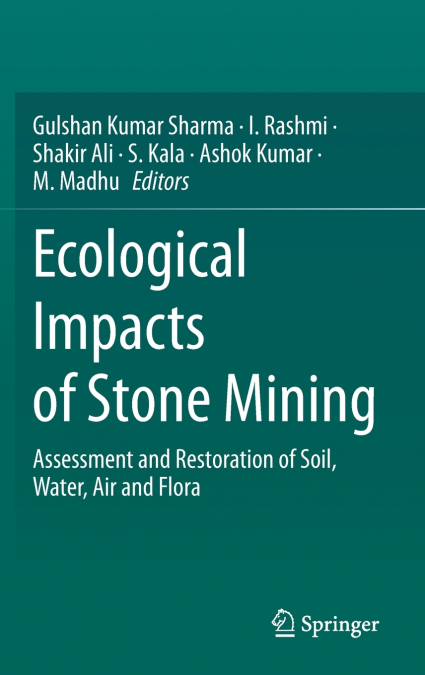
This edited book covers the impact of stone mining activities on soil, water, air, agriculture, vegetation, and policy aspects. It provides information on rehabilitation and restoration measures for stone mine spoil areas and other associated adverse impacts on human health caused by mining activities. Additionally, the book covers information related to the impact of stone mining on the socio-economic conditions of mining area inhabitants and appropriate government policies and support to meet the United Nations Sustainable Development Goals-15.3 (SDG-15.3) for degraded stone mine spoil sites toward Land Degradation Neutrality (LDN).The dumping of stone mine waste has many negative implications for the environment, soil, and natural resources. Although stone mining is the main source of livelihood for millions of people around the world and plays a crucial role in the economic development of many countries, it was estimated that nearly 4 million people die every year, especially in developing countries, due to environmental pollution from quarrying, sandblasting, and the emission of toxic gases. Mining leads to land degradation by the stacking of mine waste, loss of fertile topsoil and vegetation covers, abstraction and deterioration of the natural drainage system, deforestation, groundwater depletion, loss of plant and aquatic biodiversity, and public health issues.The book covers information about all aspects of dimensional stone mining activity and is a useful read for researchers, planners, capacity builders, scientists, and policymakers for achieving SDG 15.3. It would also be helpful for undergraduate and graduate students of agriculture, forestry, ecology, soil science, and environmental science disciplines.